Submitted by Anonymous (not verified) on Thu, 02/04/2015 - 14:56
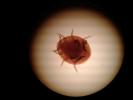 Another weekend, another invertebrate training course! Last weekend I attended the four day Soil Mesofauna course, a Tom.bio-supported training course delivered by the country’s top experts in soil science, springtails and mites.
Another weekend, another invertebrate training course! Last weekend I attended the four day Soil Mesofauna course, a Tom.bio-supported training course delivered by the country’s top experts in soil science, springtails and mites.
Submitted by Anonymous (not verified) on Wed, 25/03/2015 - 11:25
 Last weekend Tom.bio welcomed the Earthworm Society of Britain to Preston Montford for their latest Field Meeting. A young and dynamic group, the ESB have done sterling work over the past few years to increase participation in the Earthworm Recording Scheme.
Last weekend Tom.bio welcomed the Earthworm Society of Britain to Preston Montford for their latest Field Meeting. A young and dynamic group, the ESB have done sterling work over the past few years to increase participation in the Earthworm Recording Scheme.
Submitted by rich burkmar on Mon, 16/03/2015 - 09:51
 The National Forum for Biological Recording (NFBR) is a membership organisation with the unique distinction that it represents, at a national level, the interests and work of biological recorders across all taxonomic groups. We think of ourselves as an independent voice for biological recorders in the UK. For an increasing number of biological recorders, the annual NFBR conference is a highlight of the social and professional development calendars. This year's conference - 'A Question of Ecology – Answers from Biological Recording' - promises to be one of the most exciting and best attended ever.
The National Forum for Biological Recording (NFBR) is a membership organisation with the unique distinction that it represents, at a national level, the interests and work of biological recorders across all taxonomic groups. We think of ourselves as an independent voice for biological recorders in the UK. For an increasing number of biological recorders, the annual NFBR conference is a highlight of the social and professional development calendars. This year's conference - 'A Question of Ecology – Answers from Biological Recording' - promises to be one of the most exciting and best attended ever.
Submitted by rich burkmar on Fri, 13/03/2015 - 10:00
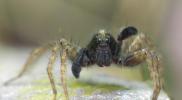 According to someone, somewhere, Saturday 14th March is 'Save a Spider Day'! A quick search on Google indicates that for others it is 'Non-smoking Day' and I dare say, if I looked hard enough, I could quickly fill my diary for tomorrow, what with avoiding cigarettes, saving spiders and everything else!
According to someone, somewhere, Saturday 14th March is 'Save a Spider Day'! A quick search on Google indicates that for others it is 'Non-smoking Day' and I dare say, if I looked hard enough, I could quickly fill my diary for tomorrow, what with avoiding cigarettes, saving spiders and everything else!
Submitted by Anonymous (not verified) on Tue, 10/03/2015 - 09:51
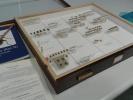 Last week Tom.bio took a trip to visit the Entomology department at Liverpool’s World Museum. The trip, initiated by the FSC’s Invertebrate Challenge Project three years ago, has become something of an annual event. It’s a chance for local entomologists, including members of the Shropshire Spider Group and the Shropshire Entomology Group, to examine some of the museum’s impressive invertebrate collections.
Last week Tom.bio took a trip to visit the Entomology department at Liverpool’s World Museum. The trip, initiated by the FSC’s Invertebrate Challenge Project three years ago, has become something of an annual event. It’s a chance for local entomologists, including members of the Shropshire Spider Group and the Shropshire Entomology Group, to examine some of the museum’s impressive invertebrate collections.
Submitted by Simon Norman on Tue, 03/03/2015 - 11:00
 FSC Publications have been working with Clare Strode and Thom Dallimore at Edge Hill University to develop a new AIDGAP guide to the mosquitoes of Great Britain and Ireland. This will be ready for AIDGAP testing from spring 2015.
FSC Publications have been working with Clare Strode and Thom Dallimore at Edge Hill University to develop a new AIDGAP guide to the mosquitoes of Great Britain and Ireland. This will be ready for AIDGAP testing from spring 2015.
Submitted by Anonymous (not verified) on Tue, 03/03/2015 - 10:09
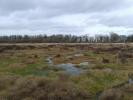 Last Friday I found myself crouched over a plastic sheet in the middle of a National Nature Reserve, squinting at Sphagnum. I’d joined an enthusiastic team of local spider experts, volunteers and Natural England staff at Fenn’s, Whixall and Bettisfield Mosses, a NNR spanning the English and Welsh border. Our mission: to search for the nationally rare spider species Glyphesis cottonae.
Last Friday I found myself crouched over a plastic sheet in the middle of a National Nature Reserve, squinting at Sphagnum. I’d joined an enthusiastic team of local spider experts, volunteers and Natural England staff at Fenn’s, Whixall and Bettisfield Mosses, a NNR spanning the English and Welsh border. Our mission: to search for the nationally rare spider species Glyphesis cottonae.
Submitted by Simon Norman on Tue, 22/10/2013 - 00:00
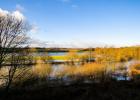 The accurate identification of specimens is an important part of many forms of biological fieldwork. Although popular groups, such as birds and butterflies, are well served with identification guides, other groups are relatively neglected. Back in the 1970s, the Field Studies Council initiated the AIDGAP project, to work towards producing identification materials for these negelected groups. In many cases, the difficulty lay in the absence of a simple and accurate key, and not in any insuperable taxonomic problems.
The accurate identification of specimens is an important part of many forms of biological fieldwork. Although popular groups, such as birds and butterflies, are well served with identification guides, other groups are relatively neglected. Back in the 1970s, the Field Studies Council initiated the AIDGAP project, to work towards producing identification materials for these negelected groups. In many cases, the difficulty lay in the absence of a simple and accurate key, and not in any insuperable taxonomic problems.
Submitted by rich burkmar on Tue, 01/10/2013 - 00:00
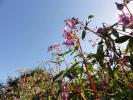 A growing amount of attention is being given to biodiversity loss resulting from the introduction of non-native species. Introduced species that do well, especially if they do so at the expense native flora or fauna, are frequently referred to as ‘invasive aliens’.
A growing amount of attention is being given to biodiversity loss resulting from the introduction of non-native species. Introduced species that do well, especially if they do so at the expense native flora or fauna, are frequently referred to as ‘invasive aliens’.
Submitted by rich burkmar on Thu, 22/08/2013 - 00:00
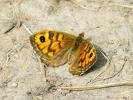 I recently took part in a really interesting email discussion with some other NFBR members (National Forum for Biological Recorders) prompted by the recent publication of a paper on metabarcoding. I think it's fair to say that many biological recorders are very cautious about the use of DNA barcoding as a tool for monitoring biodiversity. There is a perception that the development of DNA barcoding may threaten the traditional morphological identification skills of the biological recorder. I have a more optimistic outlook and the rest of this blog is derived from an email I contributed to the email discussion.
I recently took part in a really interesting email discussion with some other NFBR members (National Forum for Biological Recorders) prompted by the recent publication of a paper on metabarcoding. I think it's fair to say that many biological recorders are very cautious about the use of DNA barcoding as a tool for monitoring biodiversity. There is a perception that the development of DNA barcoding may threaten the traditional morphological identification skills of the biological recorder. I have a more optimistic outlook and the rest of this blog is derived from an email I contributed to the email discussion.
Pages